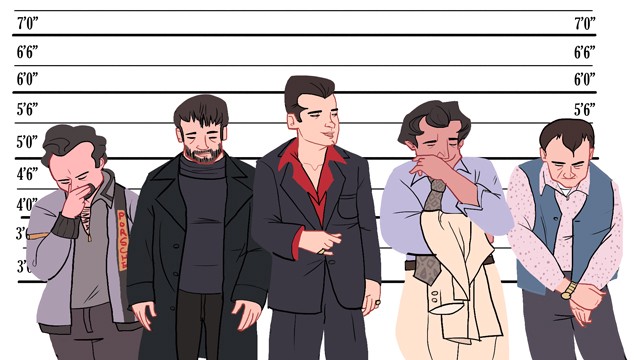
Art by Derek Bacon
For anyone who has never attended, the Sundance Film Festival might live somewhere in the abstract realms of the yearly film calendar. In a calendar year, the average American moviegoer may only see 2–3 movies in a theater. Many of them might not be too concerned with a bunch of critics and bloggers who descend upon a ski town in Utah every January to consume 40+ movies in the span of 9 days, many of which will never make it to the local cineplex. If you’re not part of the film industry or don’t aspire to become part of the industry, why care about what movies are playing at Sundance?
You should absolutely care. This list is out to prove that. Not because the most audacious blockbusters premiere at Sundance (they don’t) or because massive stars are all over Sundance (they usually reserve that for the red carpet at Cannes) or because all of the major Oscar bait will play there (that’s what the Toronto Film Festival is for). You should care because Sundance is where the careers of many of your favorite filmmakers were born. In going back over the 37 year history of the festival (which began as the Utah/US Film Festival in 1978), our editorial team couldn’t help but notice that so many great filmmakers have made their name in and around Park City, Utah. Many of them have made our list, which counts down the best that Sundance has delivered in its long and illustrious run as the preeminent American film festival.
This list answers a simple question: what are the 25 best movies that have played at Sundance?

25. Blood Simple (1985)
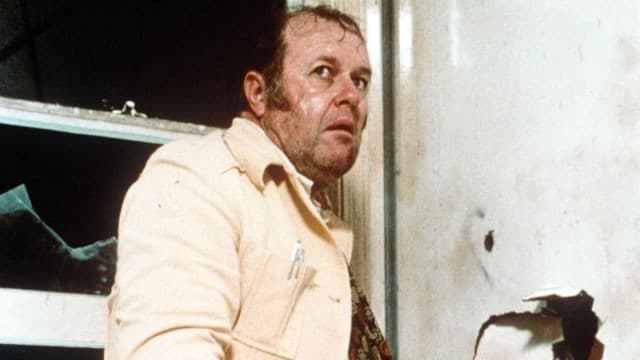
MGM
Scott Beggs: If you looked at the title of this list before reading it (and maybe you didn’t, our modern world keeps everyone busy), then you expected to see the Coen Brothers’ double cross somewhere on it. It’s a must-have. Not only was it one of the first winners of the festival after the Sundance Institute took over running the US Film Festival and began transforming it into the powerhouse it is today, this was also the directorial debut of a filmmaking duo that has delivered dozens of outstanding, unique cinematic experiences.
As you’ll see with the rest of the list, there’s one major narrative throughline that emerges: powerful beginnings. Many prominent, important filmmakers got their start by impressing audiences at Sundance, and Blood Simple is a rare example where the film (and its creators’ prowess) also helped the festival in turn. They helped give rise to one another.
The Coens managed it by refreshing a classic noir outline. There’s a hired hit, deadly miscommunication and scenes that make me want to avoid being in the same room with M. Emmet Walsh for the rest of forever, but it was imbued with a hip sensibility, aggressive framing and dialogue as thick as unleaded fuel.
24. Winter’s Bone (2010)
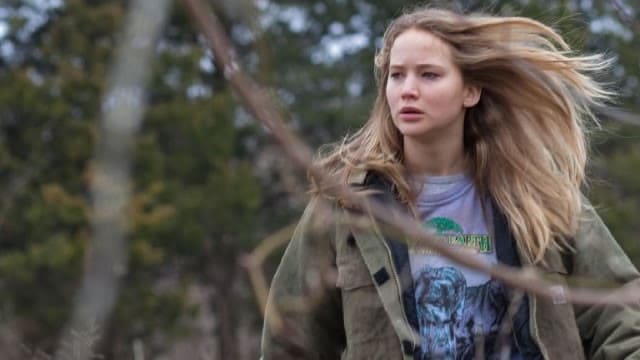
Roadside Attractions
Kate Erbland: Two words: Jennifer Lawrence. In a parallel universe somewhere out in the great beyond of whatever, Lawrence was cast in the Twilight films and made her entrée into the wide world of YA fun early – thankfully, in this universe, she didn’t get the part and went on to star in Debra Granik’s haunting Winter’s Bone.
The dark Appalachia-set drama was an instant hit at the 2010 festival, snapping up the Grand Jury Prize for Best Dramatic Film (essentially, the Best Picture category of Sundance voting) and making it known that Lawrence was one to watch within hours of premiering. That promise carried all the way to Oscar time, when the film picked up four nominations – including Lawrence’s first Best Actress nod and a Best Picture bid for the film itself. Sundance often announces great talents, but Lawrence’s near-meteoric rise to superstardom is one of the festival’s greatest success stories and, perhaps, just a harbinger of other things to come.

23. Big Night (1996)

Columbia TriStar
Christopher Campbell: Just thinking of this movie makes my mouth water, my eyes widen and my ears buzz for the sounds of Louis Prima. In the two decades since its debut, Big Night has constantly appeared at the top of lists of favorite foodie films, but it’s so much more than a showcase of Italian cuisine, particularly the main event dish of timballo (timpano in the movie). It’s also much more than the story of two brothers driven by a passion to run a successful authentic Italian restaurant on the Jersey Shore in the 1950s, when American palettes weren’t ready for more than spaghetti and meatballs and lasagna, and their one last hurrah in a bid for relevancy and, more importantly, customers.
This co-directorial debut of Stanley Tucci and Campbell Scott is first and foremost one of the most perfect allegories of the film business around the very time it debuted. Big Night was part of the dramatic competition program in 1996, the year that Sundance exploded in sort of the worst way (look up the infamy of The Spitfire Grill), yet it was also a year that was great for independent cinema, a peak for the decade that gave rise to the kinds of movies being highlighted in this list. But in spite of all the praises and press given then to the Big Nights and the Shines and Fargos and Lone Stars, etc., the people were mostly watching stuff like Independence Day, Twister and The Nutty Professor.
The restaurant run by Tucci and Tony Shalhoub’s characters is the arthouse, offering a menu of authentically European-style fare. The restaurant run by Ian Holm’s character is the multiplex, serving bland comfort food. The former’s big night might as well have been representative of the Oscars ceremony the following year, honoring so many smaller films of 1996 that the media referred to it as “independents day.” And just like the morning after Primo and Secondo’s fabulous feast, the day after those indies received special attention in Hollywood, everything was just back to normal, all still struggling to garner interest from the majority of consumers. Meanwhile, in 2014, we got Tucci in Transformers 4 and Shalhoub voicing a main character in Teenage Mutant Ninja Turtles, and it’s all the fault of everyone who didn’t see Big Night.

22. Calvary (2014)

Fox Searchlight
Rob Hunter: Father James (Brendan Gleeson) only wants what’s best for his congregation in the small Irish town he calls home, but his tranquility is upset when a man in the confession booth threatens to kill him in one week’s time. The next several days count down as the priest – who knows the man’s identity even if we don’t – interacts with increasingly agitated and frustrated townspeople, welcomes his emotionally troubled daughter (Kelly Reilly) and weighs the lost art of forgiveness in a world overtaken by selfishness, greed and anger.
The last thing I expected to love is a film about a faith, forgiveness and love, but writer/director John Michael McDonagh’s dark yet hopeful look at the complexities of human relations devastates me anew every time I watch it. There’s a rare and sincere respect to it all even as one of the side characters risks a comical level of abrasiveness (sorry Leo), and while the locals take pot shots at the priest the film never does. Instead we’re allowed to see him as a man, filled with strengths and weaknesses but striving to see the best in himself and those around him.
McDonagh has made two feature films, and like his brother Martin above his particular wheelhouse is the intersection of wit and violence. Of their four collective films though this is the only one to fully imbue its combination of comedy and mortality with an honest and profoundly hopeful spirit.

21. Garden State (2004)
Fox Searchlight
Kate Erbland: Put aside everything we know about Zach Braff’s filmmaking now – especially, put aside everything we know about his Wish I Was Here, his lackluster Kickstarter-funded Sundance return from last year – and just remember what it was like when Garden State premiered back in 2004. Braff wasn’t a known quantity just yet (“the guy from Scrubs?!”), and the film served as his both his writing and directing debut and his wider debut to Hollywood at large.
The film sold almost immediately, when Miramax and Fox Searchlight bought the film together for a gobsmacking $5M (twice its budget). The film hit theaters mere months later, pulling in an extremely impressive $35.8M in box office returns and earning scads of praise for Braff. The film should have been – and, at the time, was viewed as – the first step in a series of ever-ascending steps for Braff. Sundance was going to be the home of not just a hit, but a bright new talent who could speak for an entire generation.
Braff didn’t write or direct another film for a decade, and while it was fitting that his Wish I Was Here had its debut at Sundance (where it all began!), it was somehow even more fitting that the film bombed, a shocking reminder of the fickleness of fame and how even the most honored Sundance stars can fizzle fast.
Click here to continue reading on the next page >>
20. Sherman’s March (1987)

First Run Features
Christopher Campbell: It may not have been the first great Sundance documentary, but along with at least Louie Bluie and In Heaven There Is No Beer?, this classic by Ross McElwee is among those selections that gave the festival a prestigious reputation for nonfiction programming from the start (by start, I’m going with the mid-’80s time of acquisition of the United States Film Festival by the Sundance Institute). Back then, a film could, as this did, open theatrically four months before it screened in Park City. And then, as this did, win the Grand Jury Prize for Best Documentary. The fact that it appeared and won an award at Sundance had little to do with its being one of the few major documentary hits (relatively speaking) of that era. A film this good in those years didn’t need a Sundance. It was the other way around.
Sherman’s March is the result of McElwee’s attempt to make a film about a Civil War campaign while also attempting to rebound from a bad break up. He wound up documenting his personal journey through the South as he visited historical sites and met or was set up with various women. The filmmaker’s insight, tacked on in voiceover, makes it all come together as triumphantly as the Confederacy and his own romantic pursuits were not (at least not by the end of this particular doc). And even with all the first-person-style documentarians who have popped up in McElwee’s wake, his still feel fresh and unparalleled in their subjective and objective perceptiveness. They also, inclusive of this film most notably, co-star my pick for the greatest documentary character of all time, Charleen Swansea.
19. Blind (2014)
Sundance Institute
Rob Hunter: Ingrid has recently lost her sight, and she’s made the apartment she shares with her husband the entirety of her world. He’s supportive but suggests she venture outside again, but she chooses instead to let her mind wander in her newfound darkness. She thinks about her husband’s possible infidelity, the lives of strangers and the distinct sound of breathing from inside the apartment when she thinks she’s alone. Einar can see just fine but lives alone for fear that no one would have him. He surfs porn at night and during the day follows attractive women around town imagining the feel of their body, the smell of their hair and the possibility of engaging them in conversation. Elin is a single mother whose recent divorce left her with the realization that her friends were actually her husband’s friends.
There’s an effortless beauty on display here as the stories of three lonely people weave around and through each other with a rare combination of insight and visual creativity. It’s an amorphous canvas showing us the world through Ingrid’s fears, desires, sense of humor and sexuality, and is never less than mesmerizing and captivating. The film delights in playing with words, ideas and visuals, and it never feels the need to slam your face into its brilliance. Small shifts occur without drawing attention to themselves making this a movie that continues to entrance on repeat viewings.
Sadly, Blind has yet to see a release here in the U.S. (Sorry.) Writer/director Eskil Vogt wrote the stunning Oslo, August 31st as well as Joachim Trier’s upcoming Louder Than Bombs, but as of yet he hasn’t lined up a second directorial effort.

18. Son of Rambow (2007)
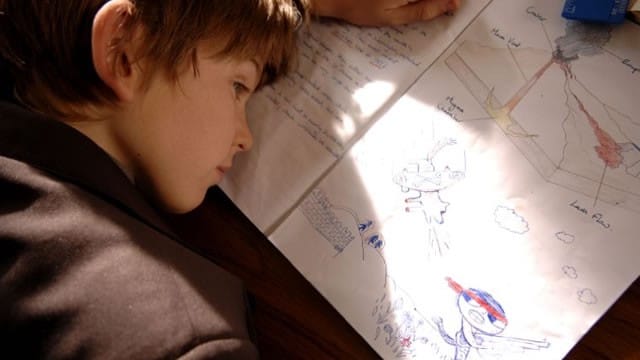
Paramount Vantage
Scott Beggs: There may be better movies on the list, there may be more affecting movies, but there aren’t any movies on this list with more heart. (If someone else makes the same claim about another movie on the roster, we will fight.) This story from Garth Jennings is a coming-of-age tale for a handful of children, a love for First Blood and a bold attempt at making a home-grown movie. This is all cinephile crack, and it’s handled with zero artificial sweeteners.
Unsurprisingly, it was born from Jenning’s experiences growing up in the 1980s, and that element shines out in every scene. The joy of the movie is really in the balance of realistic experiences and the fantasy world where little boys dress up like Vietnam vets with bazookas.
For those who haven’t seen it, watch it immediately. For those that have, how about that scene when Didier gets on the bus with the other exchange students? Has anything widened your eyes, changed your view of a character and made you choke up that much at the same time? What a fantastic moment (nestled in a stellar, blow-the-roof off ending).

17. Whiplash (2014)
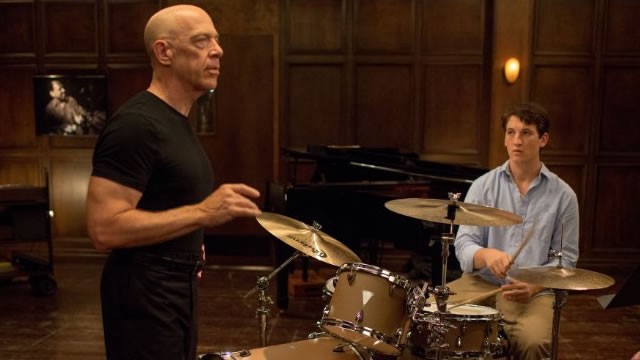
Sony Pictures Classics
Neil Miller: It’s entirely possible that Damien Chazelle’s kinetic jazz drumming thriller will end up a surprise Oscar winner this year, as it very much earned 5 nominations. But when we first saw it at Sundance last year, it was little more than a movie “with J.K. Simmons and Miles Teller.” Even upon a first viewing, it was clear that Whiplash was an explosive sort of film. The kind of pressure-building storytelling that pins you to the back of your seat and challenges you with high-stakes drama and world-class performances.
The story, which centers on a young man named Andrew (Teller) and his experience at a prestigious music conservatory in the pursuit of becoming the next great jazz drummer, are based in part on writer/director Chazelle’s own experiences in this world. It is something very foreign to anyone who has not lived through it, but the idea of finding a mentor (in this case the overbearing instructor played by Simmons) who is brutally relentless in their efforts to see potential realized, is universal. Whether through sports or arts, the idea of being pushed to the limit of your potential is universal. In this instance, it is delivered in the extreme through a wonderfully chaotic performance from Simmons.
Sometimes in order to make a great omelette, you have to break a few eggs. Whiplash breaks all of the eggs, but the omelette is tortured perfection.

16. Reservoir Dogs (1992)
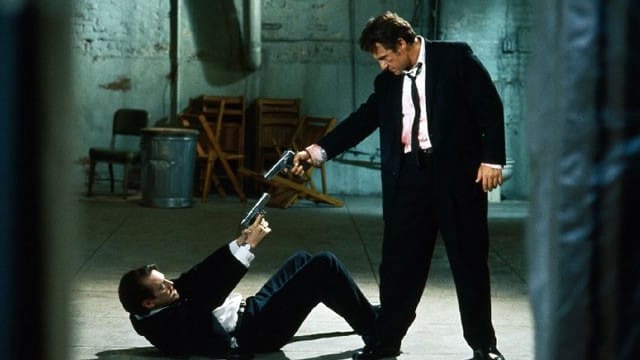
Miramax
Scott Beggs: At this point in the list, it’s vital that we ask an important question: how much do you tip the waitress? I mean, if they really put forth the effort. Master of making meals out of chit chat, Quentin Tarantino also added a few brief moments of violence into this heist story and won our hearts without having to stab an adrenaline shot into them.
This is one of those movies that makes you wonder what it was like to sit in the Park City theater in 1992 to experience it with a crowd of other people who had no idea what they were in for. It instantly transformed, “Tarantino? Never heard of him,” into “Tarantino? You’ve gotta hear about this guy.”
In that sense, this film represents the best of a festival like Sundance because it was a true revelation – a fresh voice planting a flag into the cinematic scene and demanding to be heard. Some may think that a feat like that requires cutting someone’s ear off (or having a heist film without the heist), but it actually boils down to creating a crew of lovable people who we like spending a delightful afternoon with.

Click here to continue reading on the next page >>
15. The Raid 2 (2014)
Sony Pictures Classics
Neil Miller: In this age of sequels and remakes and the ire of sequels and remakes, how in the hell did a sequel end up on our list of all-time best Sundance movies? For one, it’s a rare sequel that actually makes it into the Sundance line-up in the first place. The snow-topped mountains of Utah aren’t exactly the sort of place where Marvel goes to debut Captain America: The Winter Soldier or its ilk.
Gareth Evans’ follow-up to his 2012 Toronto Film Festival darling isn’t your typical sequel. It fits into the mold of being a more amped-up, expansive version of the first film, but it is still every bit the scrappy type of independent movie that Sundance loves. Reportedly made for only a few million dollars, The Raid 2 looks like it was done with Michael Bay’s checkbook and a much craftier filmmakers brain. It delivers massive action sequences, including one of the most fun car chases you’re going to see for a while, amazing fight choreography, and a great deal of thoughtful world building. It’s not just a bigger repeat of its predecessor, but an expansion of a world and the unique characters that inhabit it.
Plenty of movies will make this list because they are thoughtful, challenging and dramatic. This movie is all of those things and it’s a lot of fun.

14. Secretary (2002)
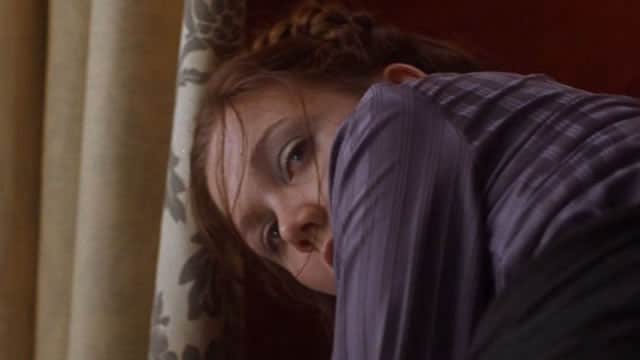
Lionsgate
Rob Hunter: A young woman named Lee (Maggie Gyllenhaal) with emotional issues takes some tentative steps out into the world with little in the way of expectations. A simple desire to be a secretary lands her in the office of one E. Edward Grey (James Spader), and while she’s not all that good at her job Grey sees something in her he likes. Slowly, the two of them begin a dance of dominance and submission with Grey in charge and Lee his willing and pliable subject, but while their relationship looks unusual on the surface it’s the beginning of an incredible love story.
Secretary is one of the most beautiful and least seen love stories of the past fifteen years. The relationship at its core is odd by societal standards, but that doesn’t lessen the emotional resonance created by the Gyllenhaal and Spader. This isn’t a film about S&M in the misunderstood sense – in fact Grey makes Lee promise that she’ll stop hurting herself – but instead it’s a tale of control, release and the permission to be true to yourself. I challenge you to find a sweeter, sexier visual representation of love than the dialogue-free scene where Grey washes, dries and puts to bed a grateful and relaxed Lee.
Steven Shainberg’s third feature didn’t exactly set the indie film world ablaze, and while he and writer Erin Cressida Wilson have continued working on and off neither of them have contributed anything else of real substance. Gyllenhaal though walked away with numerous, well-deserved awards and nominations for her performance and a move into even more prominent roles.

13. All the Real Girls (2003)
Sony Pictures Classics
Christopher Campbell: David Gordon Green hit the scene with an immediate display of genius, but his feature debut, George Washington, is not a Sundance movie. It made its debut at Berlin. This follow-up, however, premiered in Park City and has all the makings of a stereotypical Sundance rom-dram but is almost kind of too good for the fest. That’s not necessarily a knock against Sundance so much as it’s special praise for a movie so transcendent. Consider the cast, and you’ll wonder how that could be true. Zooey Deschanel stars, just before becoming the hipster dream girl. Danny McBride is the comic relief, yet he’s remarkably subdued and natural compared to anything he’s done since. Shea Whigham is, well, even then playing a charmless grump, but he fits with this movie better than anything else he’s done.
On the surface, All the Real Girls is a simple, cynical story about a womanizer who gets a taste of his own medicine when he finally falls in love with a girl who’s too young to be serious. Green keeps his characters from being mere players in a story. They’re shown to be more genuine, people who we trust are alive beyond the scenes we see them in. I don’t get such a soulful and spirited sense from most US indies these days. There’s a naturalism at play in this movie, yet there’s also a romantic energy that makes it feel more magical, even when that magic becomes dark. And through it all is an aesthetic of rust and weeds that combine for an unparalleled American beauty, plus dialogue that is authentic in its fantasticality. It gave me the line I like to use on anyone who changes for the worse, and that certainly applied to Green and his career for a while: “put your fucking hair back on and come back.”

12. Heathers (1989)
New World Pictures
Christopher Campbell: Sundance should represent what’s new and bold in independent cinema, but I’m hard pressed to think of an edgier comedy – one that works, that is – to come out of the festival since this selection of 1989. That was the year that Sundance sort of broke out, albeit still under another name, yet it wasn’t for this dark high school satire that didn’t quite find its audience until home video. Regardless of what little splash it made in Park City, though, Heathers is a prime example of what a Sundance movie ought to be. It arrived at the end of a decade steeped in studio-produced teen movies, many of them admittedly good enough and also exaggerated enough in their depictions of American adolescent social structure, and took the genre into the deep end.
What’s best about Heathers isn’t how audacious it is on the whole, though the general humor mined from teen suicide and school shootings is pretty sharp. Rather, it’s the details of the script, particularly the inventive dialogue that remains undated due to its cleverly made-up slang, evoking Anthony Burgess more than John Hughes (part of why it’s not surprising that screenwriter Daniel Waters wanted Stanley Kubrick to direct the movie). From the harshness of “Fuck me gently with a chainsaw” to the simply iconic “how very,” the language of the characters takes us into such an otherworldly realm that we don’t mind a line as corny as “no one at Westerberg is going to let you play their reindeer games,” let alone the extremes gone to in the plot.
Not even Waters, nor director Michael Lehman, have been able to replicate the excellence of Heathers, but that doesn’t make it any more understandable that no other Sundance filmmakers have. Of course, many seem to try. Like any great Sundance movie (and it should be noted that Sundance was only the US premiere of Heathers, which debuted at an Italian film market a few months prior), this went on to influence tons and tons of wannabes in the 25 years since its release, whether they be studio productions like Clueless and Mean Girls or fellow Sundance vets like Jawbreaker (also a studio production) and Pretty Persuasion. And as much as I wish they could when I see their synopses in the film fest program guide, none ever have the bite or wit of this wickedly wonderful masterpiece.
11. Brick (2005)
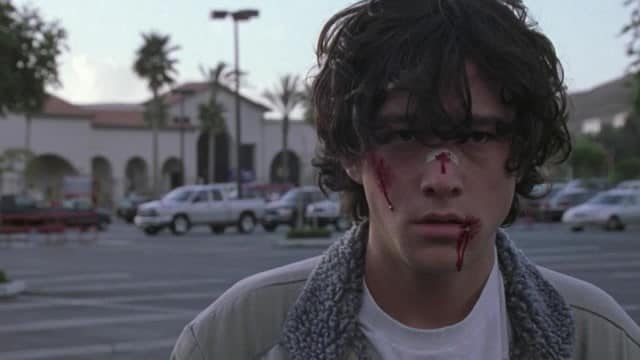
Focus Features
Neil Miller: Long before director Rian Johnson was about to make a Star Wars movie, even before he and Joseph Gordon-Levitt would team-up to take on time travel with Looper, there was Brick. By the time I had seen it at the now defunct Deep Focus Film Festival in Columbus, Ohio in 2006, it had already played Sundance and a host of other film festivals. My first thought: how the hell is this movie stuck making the festival rounds? It’s a genius bit of work, it deserves the widest release possible.
Sometimes the best of what can be classified as “Sundance movies” will only ever get universal acclaim and massive releases in our hearts. That’s where Brick lives. (It’s also available on home video and digital, where you should see it if you haven’t already). The story of a high school loser (Gordon-Levitt) who goes down the rabbit hole into a twisted, colorful world of juvenile crime in search for his missing ex-girlfriend, Brick is a beautifully and meticulously constructed modern noir. Johnson infuses his movie with great energy with fresh dialogue and some bold cinematographic choices. It also doesn’t hurt that his cast included the burgeoning talents of Gordon-Levitt, future Lost star Emilie de Ravin, Noah Segan and Nora Zehetner.
Filmed in 20 days, full of impressive feats of practical and in-camera effects and infused with an appreciation for hardboiled detective novels and noir cinema, Brick is a film that would be impressive on any scale. To know that it was made with limited resources and a cast of relative unknowns elevates it into the pantheon of Sundance debuts. It’s no surprise that it won a Special Jury Prize at Sundance for “Originality of Vision,” as that alone describes it perfectly.

Click here to continue reading on the next page >>
10. Four Weddings and a Funeral (1994)

Gramercy Pictures
Kate Erbland: Sundance isn’t exactly known for providing the film world with a wealth of fresh comedic talent – a misconception, really, one built on the persistent idea that a typical “Sundance film” is an exercise in misery, or at least mild depression – but that’s a perception that has slowly started changing over the years. Dig further back, though, and Sundance’s interest in humor simmers just below the surface of every annual outing.
You might have forgotten just how popular Mike Newell’s Four Weddings and a Funeral really was, handily checking off all the boxes for “monster hit”: a blockbuster box office take (nearly $250M worldwide), scads of critical praise, and a shiny new star (Hugh Grant). Something else you might have forgotten? The film was nominated for Best Picture, and yes, this was back in 1994, when that particular Oscar field still only contained five nominees. The film is one of Sundance’s greatest commercial hits, and it was one that arrived at a time when the festival was just starting to view that as a possibility.

9. Man on Wire (2008)
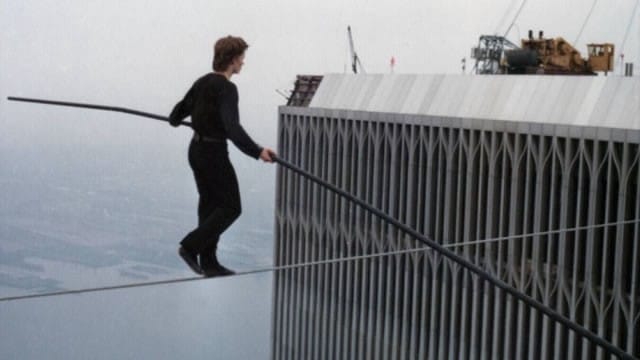
Discovery Films
Neil Miller: In 1974, a French tightrope walker named Philippe Petit fixed a cable between the two iconic towers of the recently completed World Trade Center in New York City and walked out between them with nothing between himself and the ground but a steel cable and 1,368 feet of open air. He survived a walk that lasted approximately 45 minutes and was promptly arrested upon completion by New York’s Finest. It is widely known as one of the most famous artistic crimes in history.
To know that Petit survives the ordeal doesn’t do anything to sooth the anxiety created within James Marsh’s 2008 documentary. We can see Petit as a charismatic talking head, in modern day, describing the way he carefully planned his daring walk. But that doesn’t ease the collective pounding of the audience’s heart as Petit’s story unfolds. Marsh’s film is a crime thriller with an Ocean’s 11-esque energy. It’s a thoughtful character study of a person eccentric and daring enough to conceive such a wild stunt. It’s a haunting tribute to the beauty of the towers of the World Trade Center. Energetic from start to finish, Man on Wire is a cornucopia of emotions, chief among them anxiety and reverence.
8. American Psycho (2000)
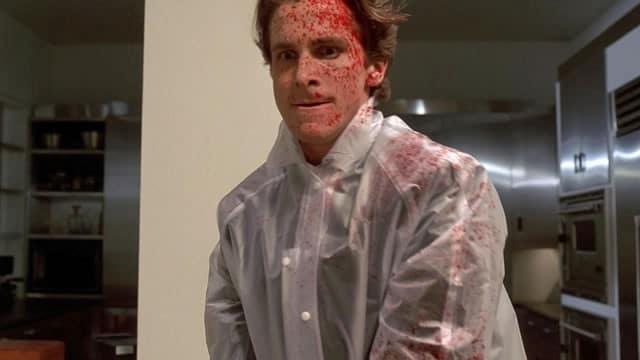
Lionsgate
Christopher Campbell: Before he was Batman, Christian Bale was Bateman – Patrick Bateman. The later superhero role would cement him as a major Hollywood star, but this is the movie that put the former child actor on the map as an adult performer worth paying attention to. What a brilliant performance it is, the kind that doesn’t get enough recognition because it’s so over-the-top, so intentionally hammy and cartoonish. Reportedly modeled after Tom Cruise’s public persona and Nicolas Cage’s acting in Vampire’s Kiss, it’s a perfectly unreal take on the murderous investment banker created by author Bret Easton Ellis. And the portrayal is so much fun to imitate and quote. For some of us, anyway.
When this adaptation debuted at Sundance in 2000, there was a lot of negative buzz, primarily from the non-critic audience. Even those who liked the movie were focused on how dislikable the main character is, and this seems weird in the context of so many other quotable psychopaths in cinema. The very thing that positively and originally distinguishes Bale’s Bateman – that appropriately cold and shallow representation of a cold and shallow man – is apparently why he is more disturbing to some viewers than the more believable, more human, more beloved characters of, say, Taxi Driver and Reservoir Dogs.
The hatred American Psycho was met with in Park City has had me wondering how a more literal adaptation might have been received. Ellis’s book is extremely violent, because it has to be on the page. It’s written from the voice of a delusional antisocial monster. Director Mary Harron toned down that violence so the murders are still bloody but not graphic, because it doesn’t have to be on the screen. Especially when it helps the comedy of the satire to not become bogged down in the terrifying details of Bateman’s supposed killings. Visual cues require fewer details for our imagination than literary, and Harron’s restraint there is even more noteworthy given its balance against the excess of Bale’s performance.

7. Take Shelter (2011)
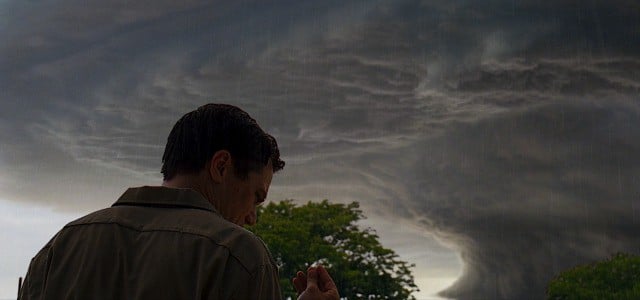
Sony Pictures Classics
Scott Beggs: Jeff Nichols’ story of a man who begins experiencing visions of the end of the world is magnificent, and not enough people have seen it so go tell your friends, co-workers and grandma right now. At a time when so many movies crank spectacle up to 11 at the expense of a few points on the emotional end, Take Shelter manages to maximize both, cultivating a modern Noah/Job/John Deere tale where faith becomes anchor and albatross.
Michael Shannon and Jessica Chastain are as good as they’ve ever been, They are two edges of the same dramatic coin – two people who love each other for profound and practical reasons, wrestling with the question of whether bone-deep belief or madness has grabbed a hold of their family.
Shot in an intimate style that puts you right at their dinner table, it’s intense and remarkable throughout. Shannon’s character is haunted by inner doubts and by a community that mocks and derides what they see as clear insanity. Bubbling with shaky reality, it’s the kind of drama that sticks to your bones. Nichols and company make the act of opening up a storm shelter door more powerful than a heart attack.

6. Moon (2009)
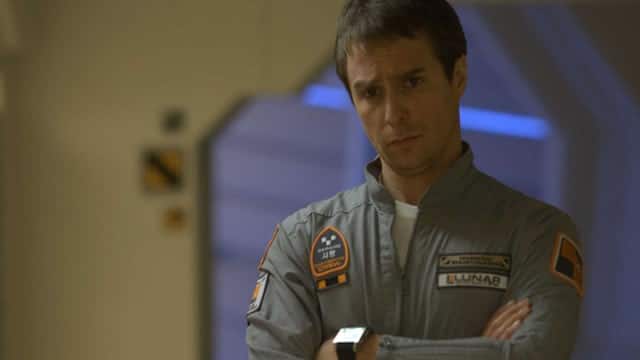
Sony Pictures Classics
Kate Erbland: Sundance may often trot out glitzy premieres featuring a bevy of known talents in smaller “passion” projects, but it’s still a hell of a place to go to find new faces (frankly speaking, that’s the best thing about any festival). In January of 2009, Sundance regular Sam Rockwell was the marquee name of a teensy sci-fi feature simply named Moon, but the real story of the space-set thriller was director Duncan Jones. Sure, Jones might be the son of David Bowie, but the filmmaker has never used his family tree to earn recognition – notice his name isn’t Duncan Bowie – and the ambitious feature proved that creative talent is probably genetic.
Moon is bold and slick, but it’s also able to deliver on its early promises, backing up a solid Rockwell performance and an enveloping environment with assured direction and a unique voice. The film’s premiere at Sundance might have helped the festival further beef up its reputation for debuting excellent, finely tuned sci-fi films, but Sundance also helped Moon out immeasurably – before it debuted to rave reviews, Sony was considering putting the feature out as a direct-to-video feature.
The film made almost $10M at the box office – nice work for a Sundance film – and helped propel Jones to directing studio features like Source Code and the much-hyped Warcraft movie.

Click here to continue reading on the next page >>
5. In Bruges (2008)
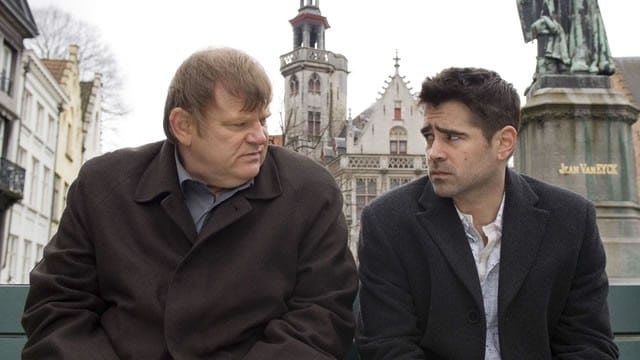
Focus Features
Rob Hunter: Ken (Brendan Gleeson) and Ray (Colin Farrell) have arrived in the Belgian city of Bruges with direct orders from their boss to wait there for further instructions. Ken loves the city and is excited to take it all in, but Ray would much rather be dead than spend another minute in the world’s most boring place. We soon realize the pair are hitmen hiding out after a job went bad back in London, and as the consequences of their action catch up to them it becomes clear that Ray might just get his wish after all.
Hollywood loves clear, easy to read labels on their releases meaning audiences rarely get smart, genre-blending films and instead are left to choose from easily digestible comedies, dramas or action films to name few. This UK import shows what’s possible though by delivering a blackly comic gem infused with big laughs, raw emotion and a couple of well-crafted set-pieces to satisfy adrenaline junkies too. It’s wonderfully foul, deeply heartfelt and incredibly funny, and it reminds us what’s possible when genre walls are ignored in favor of smart, engaging storytelling.
Writer/director Martin McDonagh’s feature debut announced a refreshing new voice, and while his follow-up (Seven Psychopaths) is a lesser film he remains a talent to watch. The biggest beneficiary (aside from viewers) was Farrell who showed a different side of his talents. It showed that his comedic abilities are at least as strong as his dramatic ones, and it opened the doors to future opportunities that might otherwise have been outside of his grasp including Horrible Bosses, Fright Night and the hilarious Winter’s Tale.
4. Memento (2001)
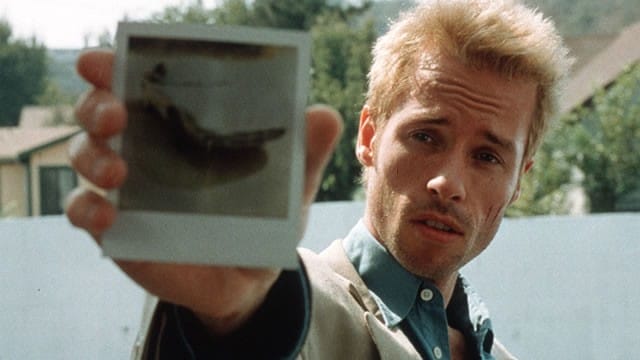
Newmarket Films
Scott Beggs: There are at least two reasons to love Memento. First of all, it’s a challenging poem that reflects the consequences of trusting yourself. We all have systems and rules that we live by. We aren’t all striving for revenge on our murdered wives, but we all need to believe that the path we’ve laid out will lead us to happiness. Or, at least, that it won’t lead us to ruin. Then again, if we can’t remember reality, can’t it be enough to manufacture the closest facsimile of joy? To delude ourselves into feeling wonderful in spite of the truth?
While you consider that, consider the second reason to love this film: the launch of Chirstopher Nolan. His entire career is owed to this movie – a festival favorite that every distributor loved, but passed on. Standing ovations didn’t matter without many trailer moments. No one saw it being understood, let alone being a commercial success, so New Market had to sell it themselves, and they had millions in profit to show for it. This was a genuine phenomenon, one that fans continue to dissect and puzzle over even as Nolan has offered more mysteries. Bottom line, if you like Batman, you should shake Leonard Shelby’s hand. Then shake it again, because he won’t remember it.
Where it fits in the noir clubhouse is difficult to say. Something close to a tragic, deadly serious Pink Panther, maybe. A whodunnit that shows us everything in its first frame. A grounded meditation on what it might be like to wake up from the same nightmare every few minutes.

3. Four Lions (2010)
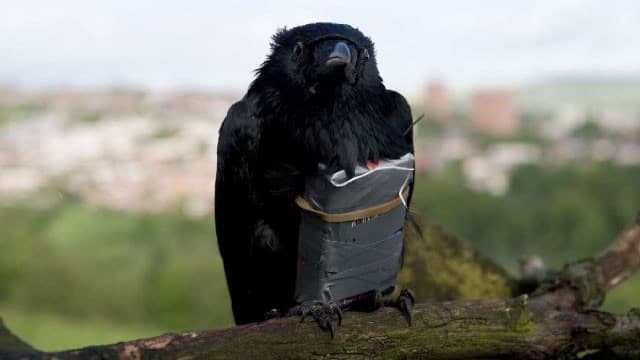
Drafthouse Films
Kate Erbland: Even the briefest of taglines for Christopher Morris’ hilariously, powerfully funny Four Lions sounds like an exercise in utter futility – “it’s a comedy about wannabe suicide bombers!” – but the British comedian’s debut feature film manages to effectively work as both a pitch black comedy and a sharp reflection of society’s worst fears. While modern rhetoric might classify all jihadists as “evil,” Morris’ film begs us to consider what would happen if a group of them were just really, really stupid, literally criminally so.
A lot of films are off-handedly deemed “brave” (normally, these films involve a famous actor or actress losing a whole bunch of weight) but Four Lions really is brave, and that has zero to do with anyone’s physical appearance. Morris didn’t take the project on lightly – the key to its surprising sensitivity and canny character work, the last thing most people would expect from a comedy about idiotic terrorists – intending to use the film as a way to explore homegrown terrorism from the inside.
When the film premiered at Sundance in 2010, fans of Morris might have had an inkling of what the feature would contain, but most people were surprised by the offering, though admiring enough to short-list the film for the festival’s World Cinema Grand Jury prize (it ultimately lost to Animal Kingdom, certainly a worthy competitor). The film went on to snag Morris and company a slew of awards and nominations – including a BAFTA nod for Best British Independent Film – but its real win was reminding people that everything can be funny, you just have to be bold enough to give it a go.

2. (500) Days of Summer (2009)
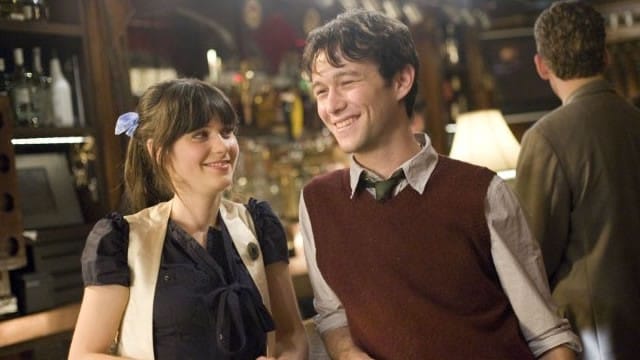
Fox Searchlight
Rob Hunter: Tom (Joseph Gordon Levitt) has known love, but he’s also known its loss. A woman named Summer (Zooey Deschanel) spent 500 days in his heart, soul and mind, and as we shuffle around throughout those days, forward and backward, we see the hows and whys of both love and heartbreak. The structure abandons traditional arcs in favor of telling its story through moments, expressions and visual style.
This incredibly creative, lovely and honest film is something of a romantic comedy deconstruction as it shows us both the highs and lows of a relationship through Tom’s eyes. That last part is important as some have taken to mistakenly labeling the film as misogynistic. Maybe it’s the playful spirit – animation, musical dance number – but far from hating on women the film is one man’s desperate attempt to recognize that others don’t have the power to determine his happiness. Tom loves Summer, but he hates the pain that comes from love’s end, and anyone who’s experienced love and loss will identify with just about every beat in this beautifully-told tale.
Both Levitt and Deschanel worked steadily before and after this film – the only one of my five picks to have made a dent at the box-office – but it’s the director and writers who received the real boost from it. Director Marc Webb parlayed its success into a gig rebooting Spider-Man, and while he may have bit off more than he can chew with its sequel he remains a sought-after filmmaker. Writers Scott Neustadter and Michael H. Weber meanwhile have become a highly successful duo after following up their debut with the likes of The Spectacular Now and The Fault in Our Stars.

1. The Usual Suspects (1995)
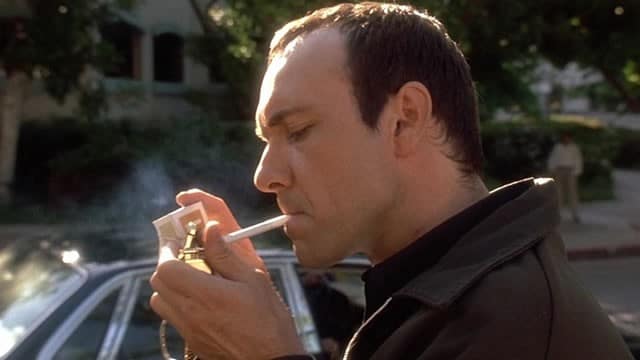
Gramercy Pictures
Neil Miller: If there’s one thing that is evident from this list, it’s that Sundance is often a launching pad for talent. In this countdown of 25 films, you’ve seen the likes of David Gordon Green, Duncan Jones, Mark Webb, Jennifer Lawrence, Quentin Tarantino and Christopher Nolan all use Sundance to make a mark early in their careers. This is most emphatically the case with The Usual Suspects. Its debut and ultimate success paved the way for two very successful careers: that of director Bryan Singer, who went on to direct several X-Men movies and plenty of other quality films; and of writer Christopher McQuarrie, who has gone on to continually deliver quality writing (and more recently some directing) with films such as Jack Reacher and Edge of Tomorrow.
Even more impressive than what came after The Usual Suspects is the movie itself. It’s a big ruse, in the end. One of those rare projects that hinges on a massive twist (Who is Keyser Soze?) and actually delivers in a way that is both surprising and logical. It hinges on a key performance from Kevin Spacey, whose career was just hitting its stride (he would make Se7en the same year and American Beauty a few years later). And while the film’s coup de grace is the most memorable element, the execution of its setup – thanks to McQuarrie’s detail-oriented script – is the real work of genius. The ensemble cast is great, the dialogue is razor sharp and the entire affair has a re-watchable quality that finds few equals in modern cinema. Short and sweet, it’s the kind of film many are compelled to re-watch over and over in an effort to unfurl the mystery and explore the many details that exist in the background of this incredibly well-constructed world. You don’t get that kind of payoff with sloppy storytelling. In contrast, such precise execution will get you two things: a healthy career as a filmmaker and a spot among the Sundance elite.
Related Topics: Sundance
